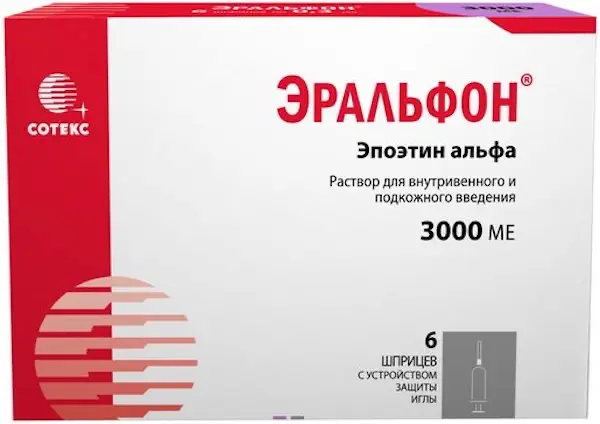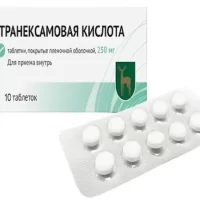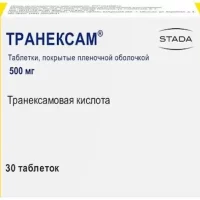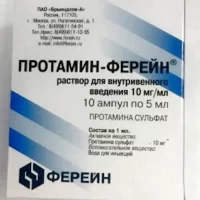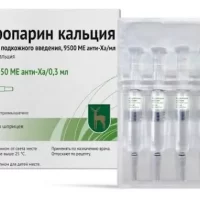Description
Eralfon Pharmacodynamics
Pharmacological properties
Epoetin alfa is a purified glycoprotein that stimulates erythropoiesis; it affects the division and differentiation of progenitor cells. It is produced by mammalian cells with a built-in gene encoding human erythropoietin synthesis. Biologically, epoetin alfa does not differ from human erythropoietin.
Protein fraction is about 58 % of molecular weight and consists of 165 amino acids. Four hydrocarbon chains are attached to the protein by three N-glycoside bonds and one O-glycoside bond. The molecular weight of erythropoietin is approximately 32,000-40000 dalton.
Pharmacodynamics
After drug administration the number of erythrocytes, reticulocytes, hemoglobin level and 59Fe uptake rate increase. In bone marrow cell culture it was shown that epoetin alfa selectively stimulates erythropoiesis without affecting leukopoiesis.
Healthy volunteers.
After administration of a single dose of erythropoietin alfa (20000 to 160,000 ME subcutaneously), a dose-dependent response was observed as assessed by the following pharmacodynamic markers: reticulocyte, erythrocyte and hemoglobin content. A concentration-time profile with a peak and return to baseline was observed for the change in reticulocyte count. A less clear profile was observed for erythrocytes and hemoglobin. All pharmacodynamic markers increased in a linear relationship with a maximum response value at the highest doses.
When comparing the administration of a single dose of 40000 ME and three doses of 150 IU/kg per week, despite the difference in concentration-time profiles, the pharmacodynamic response was similar for the two dosing regimens. Additionally, regimens were compared when administered once weekly and once every two weeks. In summary, based on the results of the pharmacodynamic studies, the 40000 ME once-weekly regimen proved to be more effective than the once-weekly dosing regimen, despite the similarity in reticulocyte counts.
Patients with chronic renal failure (CRF)
Erythropoietin alfa can stimulate erythropoiesis in patients with anemia and CPN, including those on hemodialysis. The first obvious response to erythropoietin alfa administration with an increase in reticulocyte count was observed after 10 days, followed by increases in hematocrit, erythrocyte, and hemoglobin values, usually between 2 and 6 weeks. The response for hemoglobin varies for individual patients and may depend on iron stores and concomitant health problems.
Children with CPN.
In clinical trials involving patients 0.5 to 18 years of age, erythropoietin alfa was administered at 75 IU/kg/week intravenously in 2 or 3 doses, after dialysis, titrating the dose at 75 IU/kg/week at 4-week intervals (to a maximum of 300 IU/kg/week), to achieve a hemoglobin concentration of 1 g/dL/month. 81% of patients achieved the desired hemoglobin concentration: 9.6 to 11.2 g/dL. With an average treatment time of 11 weeks and an average dose of 150 IU/kg/week, of the patients who achieved their target therapy results, 90% were on an infusion regimen of 3 times a week.
Patients with chemotherapy-induced anemia
Erythropoietin alfa, when administered 3 times weekly or once weekly, showed the ability to increase hemoglobin and reduce the need for blood transfusions one month after initiation of chemotherapy in anemic cancer patients. The AUC profiles of pharmacodynamic parameters (erythrocyte, reticulocyte, and hemoglobin content) were similar for healthy volunteers and for patients after chemotherapy.
Adult participants of the autologous blood collection program before extensive surgery
Erythropoietin alfa has been shown to stimulate red blood cell production to increase autologous blood collection and stop the decrease in hemoglobin in adult patients referred for extensive surgery who are not going to build their own blood supply.
Adult patients prior to orthopedic surgery
For patients prior to major surgery with a pre-treatment hemoglobin value of > 10 to ≤ 13 g/dL, erythropoietin alfa reduces the risk of receiving transfusions of foreign blood and accelerates the recovery of red blood cells (increases hemoglobin, hematocrit and reticulocyte counts).
- Anemia associated with chronic renal failure in adults and children, including patients on hemo- or peritoneal dialysis;
- Anemia in adult cancer patients with solid (non-myeloid) tumors, malignant lymphoma or multiple myeloma (for prevention and treatment);
- Anemia in adult HIV-infected patients treated with zidovudine when endogenous erythropoietin levels are less than 500 IU/mL;
- as a part of a preoperative program before major surgery in patients with a hematocrit level of 33-39% to facilitate autologous blood collection and reduce the risk associated with the use of allogeneic hemotransfusions, if the expected need for transfused blood exceeds the amount that can be obtained by autologous collection without epoetin alfa;
- before major surgery with an expected blood loss of 900-1800 ml in adult patients without anemia or with mild to moderate anemia (hemoglobin level 100-130 g/l) to reduce the need for allogeneic hemotransfusions and facilitate recovery of erythropoiesis.
- uncontrolled arterial hypertension;
- Hypersensitivity to the components of the drug;
- Patients with severe pathology of coronary, carotid, cerebral and peripheral vessels, including those who have recently had a myocardial infarction or acute stroke (as part of the pre-prescription blood collection before major surgery);
- Pregnancy and breastfeeding;
- patients who, for whatever reason, are unable to receive adequate prophylactic antithrombotic therapy;
- Patients with partial red cell aplasia who have received therapy with any erythropoietin.
- Before application, the solution should be carefully examined for visible particles or discoloration. The drug should not be shaken because it may cause denaturation of glycoprotein and loss of activity of the drug. Eralfon® contains no preservatives, therefore individual package is intended for single use.
- Intravenous administration. Duration of injection is at least 1-5 minutes. Slower administration is preferable for patients with flu-like syndrome to drug administration. In patients on hemodialysis, the drug is injected through the needle into the fistula at the end of the dialysis procedure. To flush the connecting tubes, as well as to ensure satisfactory introduction of the drug into the circulation system, 10 ml of isotonic sodium chloride solution is injected after the injection of Eralfon® drug.
- Do not administer the drug as an intravenous infusion or mix it with other drugs.
- Subcutaneous injections. Maximum volume of one subcutaneous injection shall not exceed 1 ml; if it is necessary to administer larger volumes, several injection points shall be used. The drug is injected under the skin of the shoulder, thigh, anterior abdominal wall.
- When changing the method of administration the drug is administered in the same dose, then the dose is adjusted if necessary (to achieve the same therapeutic effect when administered subcutaneously a dose by 20-30% less than when administered intravenously).
- Patients with chronic renal failure
- In patients with chronic renal insufficiency, Elalfon® may be administered intravenously and subcutaneously. Intravenous administration is preferable for patients on hemodialysis. In patients with chronic renal failure not on dialysis and in patients on peritoneal dialysis the drug can be administered subcutaneously.
- Optimal hemoglobin content is 100-120 g/l for adult patients and 95-110 g/l for children.
- If the patients have concomitant clinically manifested ischemic heart disease or chronic heart failure, the maintenance hemoglobin level should not exceed the upper limit of optimal value.
- The drug dose is 50 IU/kg of body weight. During the process of adjustment the dose of Eralfon® is increased in case if hemoglobin level increases less than 10 g/l in a month.
- Clinically significant increase of hemoglobin level is usually not observed within less than 2 weeks and some patients may need 6-10 weeks.
- When normal hemoglobin levels are reached, the dose of the drug should be reduced to 25 IU/kg to ensure that hemoglobin levels are not exceeded. The dose should be reduced when the hemoglobin level reaches 120 g/L. Dose reduction can be achieved by cancelling one administration per week or by reducing the administered dose.
- Adult patients on hemodialysis
- In patients on hemodialysis, Eralfon® is preferably administered intravenously.
- Treatment is divided into two phases – anemia correction phase and maintenance phase.
- Anemia correction phase:
- Eralfon is administered at a rate of 50 IU/kg body weight three times per week. If necessary, the dose can be increased (not more often than once in 4 weeks) by 25 IU/kg of body weight three times a week until optimal hemoglobin content is achieved. Maintenance therapy:
- The usual dose to maintain optimal hemoglobin content is 30 to 100 IU/kg body weight three times per week. Available data suggest that patients with severe anemia (hemoglobin less than 60 g/l) require a higher maintenance dose.
- Adult patients on peritoneal dialysis
- Both intravenous and subcutaneous administration of Elalfon® is possible in patients on peritoneal dialysis.
- Anemia correction phase:
- The drug is administered at a rate of 50 IU/kg body weight twice a week. If necessary the dose can be gradually increased by 25 IU/kg of body weight (not more often than once in 4 weeks) two times a week until optimal hemoglobin content is reached. Maintenance phase:
- The usual dose to maintain optimal hemoglobin is 25 to 50 IU/kg body weight twice weekly.
- Adult patients with chronic renal failure who are not receiving dialysis
- In patients with chronic renal failure who are not on dialysis, both intravenous and subcutaneous administration of Eralfon is possible. Anemia correction phase:
- Eralfon is administered at a rate of 50 IU/kg body weight three times a week. If necessary, the dose can be increased (not more often than once in 4 weeks) by 25 IU/kg of body weight three times a week until optimal hemoglobin content is achieved. Maintenance Phase:
- The usual dose to maintain optimal hemoglobin content is 17 to 33 IU/kg body weight three times a week.
- Children on hemodialysis, regardless of age
- Anemia correction phase:
- Eralfon is administered at a rate of 50 IU/kg body weight three times a week intravenously. If necessary, the dose can be increased (no more than once every 4 weeks) by 25 IU/kg body weight three times a week until optimal hemoglobin content is achieved. Maintenance phase:
- Generally, children with body weights up to 30 kg require a higher maintenance dose than adults and children with body weights greater than 30 kg. The following maintenance doses of epoetin alfa have been established in clinical studies after six months of epoetin alfa therapy:
- Body weight, in kg Dose of drug
- IU/kg body weight three times weekly
- Usual maintenance Median
- < 10 75-150 100
- 10-30 60-150 75
- >30 30-100 33
- Available data suggest that patients with severe anemia (hemoglobin less than 68 g/L) require a higher maintenance dose than patients with less severe anemia.
- Patients with cancer
- For the treatment of anemia in adult cancer patients, Eralfon® is administered subcutaneously. Optimal hemoglobin content should be 100-120 g/l in men and women and should not be exceeded.
- The starting dose for prevention or treatment of anemia should be 150 IU/kg body weight three times a week subcutaneously. Alternatively, the starting dose may be 40000 ME once a week subcutaneously.
- If after four weeks of the treatment the haemoglobin amount has increased and is more than 10 g/l or the reticulocyte amount has increased more than 40000 cells/μl above the initial number the dose of Eralfon should be kept.
- If after four weeks of the treatment increase of hemoglobin is less than 10 g/l and increase of reticulocyte number is less than 40000 cells/μl compared to the initial number during the next four weeks the dose is increased up to 300 ME/kg of body weight three times per week or up to 60000 ME once per week.
- If after an additional four weeks of treatment with the dose of Elalfon® 300 IU/kg three times per week or 60000 ME once per week, the haemoglobin content has increased and is more than 10 g/l or the reticulocyte count has increased by more than 40000 cells/μL, the current dose of Elalfon® should be kept. If after four weeks of the treatment in dose 300 IU/kg of body weight or 60000 ME once a week the haemoglobin amount increases less than 10 g/l and the reticulocyte number increases less than 40000 cells/μl in comparison with the basic amount, the treatment should be stopped.
- In case of hemoglobin increase of more than 20 g/l within a month or when hemoglobin level reaches 120 g/l, the drug dose should be decreased by 25%. If content of hemoglobin exceeds 120 g/l it is necessary to stop the treatment until hemoglobin decreases below 120 g/l and then continue administration of Elalfon® in dose lower by 25%.
- Therapy with Eralfon® should be continued during one month after the end of chemotherapy course.
- HIV-infected patients treated with zidovudine
- It is recommended that baseline serum levels of endogenous erythropoietin be determined before starting treatment with Eralfon. Studies have shown that treatment with erythropoietin levels greater than 500 IU/ml is unlikely to have an effect.
- Anemia correction phase:
- The drug is administered at a dose of 100 IU/kg body weight three times a week subcutaneously or intravenously for eight weeks. If after eight weeks of therapy the satisfactory effect has not been achieved (e.g., decrease in the need for blood transfusions or increase in hemoglobin), the dose can be increased stepwise (no more than once every four weeks) by 50-100 IU/kg of body weight three times a week. If a satisfactory response to therapy with Eralfon at a dose of 300 IU/kg body weight three times a week has not been achieved, a response to further therapy at higher doses is unlikely.
- Maintenance phase:
- After achieving a satisfactory effect in the anemia correction phase, the maintenance dose should provide a hematocrit between 30-35%, depending on changes in the zidovudine dose and the presence of concomitant infectious or inflammatory disease. If hematocrit is greater than 40%, the administration of Eralfon should be discontinued until hematocrit decreases to 36%. During resumption of therapy the dose of epoetin alfa should be decreased by 25% with subsequent adjustment for maintenance of the required hematocrit.
- Hemoglobin content in HIV-infected patients receiving zidovudine therapy should not exceed 120 g/l.
- Serum ferritin levels (or serum iron levels) should be determined in all patients before and during treatment with Eralfon®. Additional iron supplementation is prescribed if necessary.
- Adult patients participating in an autologous blood collection program prior to surgical procedures
- The intravenous route of administration is recommended.
- Epoetin alfa should be administered at the end of the blood collection procedure.
- All contraindications for autologous blood collection should be considered before prescribing Eralfon. At each visit of the doctor a blood sample is taken from the patient (if hematocrit level is 33-39% and/or hemoglobin level is 100-130 g/l) and stored for autologous transfusion. The recommended dose of Eralfon is 600 IU/kg body weight intravenously twice a week for three weeks before surgery. Serum ferritin levels (or serum iron levels) should be determined in all patients before and during treatment with Eralfon. Additional iron supplementation is prescribed if necessary.
- In case of anemia its cause should be determined before the beginning of therapy with Eralfon.
- Patients in pre- and postoperative period not participating in autologous blood collection program
- It is recommended to use subcutaneous administration of the drug in dose of 600 IU/kg of body weight weekly during three weeks before operation (21, 14 and 7 days before operation) and on the day of operation. If necessary, when it is medically necessary to shorten preoperative period, Eralfon can be administered daily in dose 300 IU/kg of body weight during 10 days before operation, on the day of operation and during 4 days after operation. If hemoglobin is less than 130 g/l, it is recommended to administer Eralfon in the dosage of 300 IU/kg per day. If hemoglobin reaches 150 g/l or higher, Epoetin should be discontinued.

